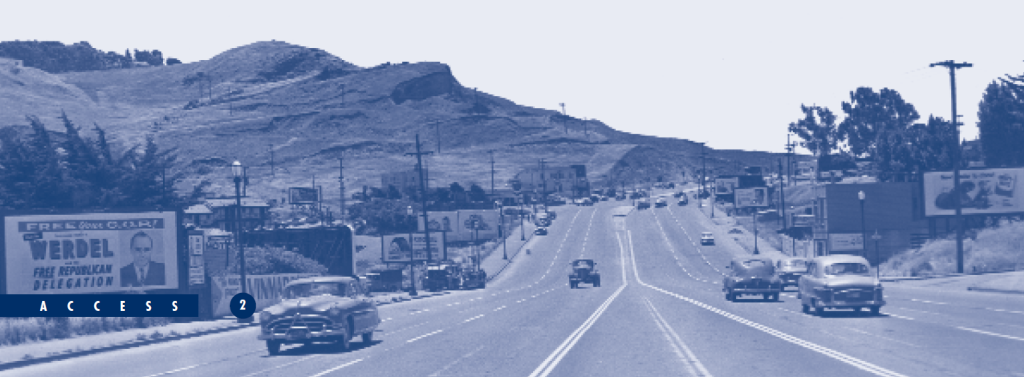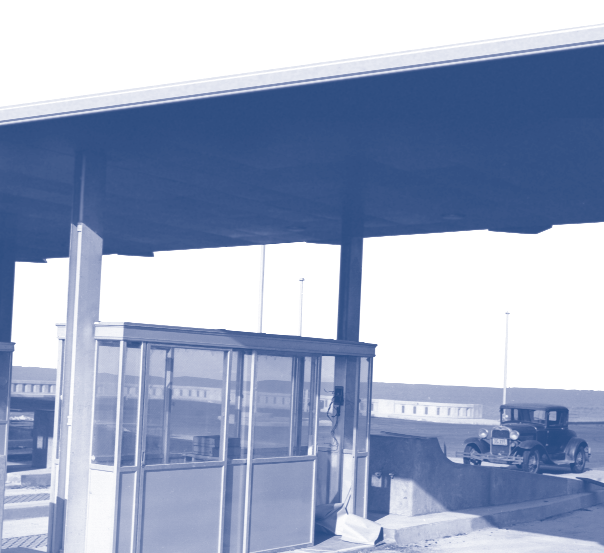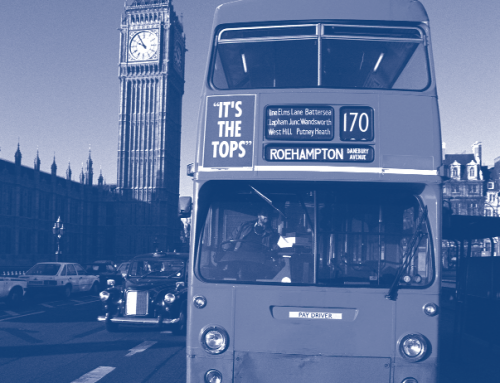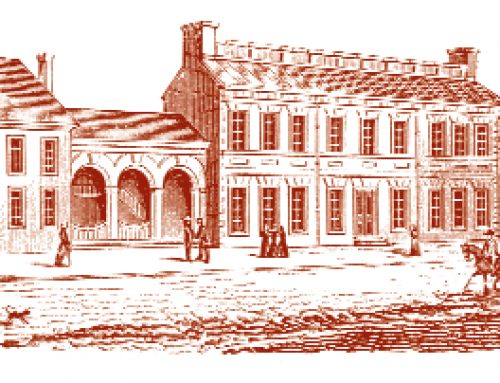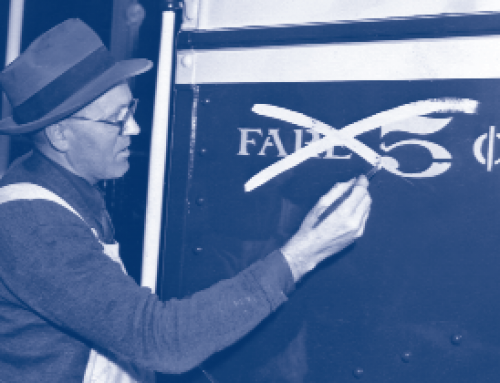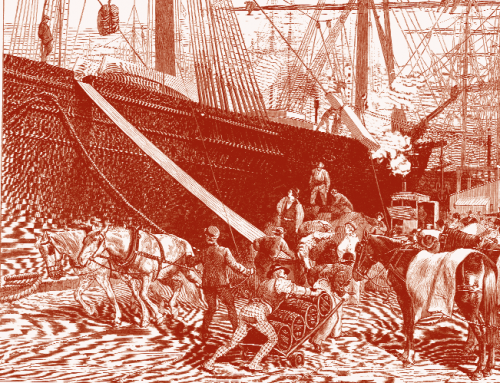Who should pay for roads? How should they pay?
These frequently debated questions echoed through the first two decades of the last century as motor vehicle use accelerated. It seemed only fair to ask users to pay for roads, but collecting road– side tolls was costly, slowed traffic, and was feasible on only the most heavily traveled highways. Paying for roads with general tax revenues was far simpler, but was seen as unfair to the many people without cars or trucks who would be forced to pay for roads that they would seldom use. The eventual solution—the motor-fuel tax—was a brilliant one: the tax was cheap and easy to collect, and it charged travelers in rough proportion to their use of roads.
While the motor-fuel tax has been the backbone of surface transportation finance for over eight decades, its buying power has waned considerably in recent years. In response, public officials have gradually turned away from a “user pays” principle of highway and transit finance and toward other instruments of taxation, such as voter-approved local sales taxes and general revenue bonds. A wrinkle in this trend, however, has recently emerged in the form of electronic tolling. Many such “toll-booth-free” systems have gone into service around the world in recent years, and many more are on the drawing boards. The most ambitious of the proposals currently in development would replace the venerable fuel tax entirely with a distance-based user fee. There are many possibilities presented by distance-based tolling systems, as well as many uncertainties and risks.
Is the Motor-Fuel Tax Running Out of Gas?
Because it is levied per gallon, inflation and improved fuel efficiency combine to erode the buying power of the motor-fuel tax. To keep pace with rising costs and increasing travel, the per-gallon fuel tax levy needs to be hiked regularly. But while fuel taxes have risen a few times since the 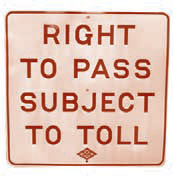 early 1980s, they have fallen far short of the combined effects of inflation, vehicle fuel efficiency, and new program responsibilities. In a political climate that remains wary of any kind of tax increase, public officials have tended to put periodic stopgap revenue measures before voters for approval, often in the form of local sales taxes or bond measures targeted for specific transportation projects.
early 1980s, they have fallen far short of the combined effects of inflation, vehicle fuel efficiency, and new program responsibilities. In a political climate that remains wary of any kind of tax increase, public officials have tended to put periodic stopgap revenue measures before voters for approval, often in the form of local sales taxes or bond measures targeted for specific transportation projects.
Even with such ad hoc measures, however, the gap between revenues and construction and maintenance needs has been widening since the 1970s across the US. In California, for example, the state Transportation Commission currently reports an unfunded backlog of highway maintenance and construction projects in excess of $100 billion. Moreover, the recent rise in popularity of extremely fuel-efficient hybrids and the continuing development of alternative-fuel vehicles threatens to weaken the relationship between road use and gasoline tax revenues even further. All evidence, then, suggests that the fuel tax’s days may be numbered, though what that number might be remains the subject of considerable debate.
The Rise of Electronic Tolling
As transportation experts ponder the life expectancy of the gas tax during these first decades of the 21st Century, they are again asking: Who should pay for roads? Then, how should they pay? While the questions have not changed from nearly a century ago, the possible answers have. This is because a new breed of information technologies— including on-board computers, global positioning systems (GPS), digital maps, and wire- less communications—now make it relatively easy and cheap to measure and record vehicle travel by road segment and time of day, even across different states and jurisdictions. Such technology effectively opens the door to numerous pricing options long proposed by transportation economists but never before deemed feasible or practical.
In a report we recently prepared for the Transportation Research Board, we identified 88 examples from around the world of innovative electronic tolling applications already in place or in the advanced stages of development. The cases we examined incorporate a variety of pricing schemes, ranging from facility congestion tolls to area congestion tolls to weight- and distance-based user fees and insurance charges. Of these, by far the most technically advanced plans with the greatest revenue implications are proposals to replace the fuel tax with a general-purpose, network-wide, distance-based user fee for automobiles and trucks.
Although exact implementation details for distance-based user fee proposals vary, the technical strategy, in its simplest form, works as follows. To determine and record travel information, each car must be equipped with an on-board unit that integrates these components: a GPS receiver, a set of digital maps identifying jurisdictional boundaries, an odometer feed, a rate table for computing distance charges, and some form of wireless communication technology for reporting billing data. During each trip, the computer 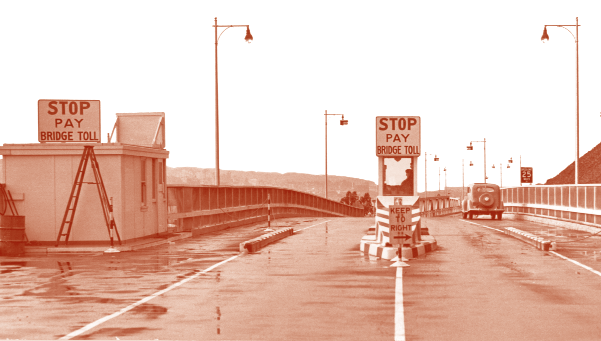 repeatedly checks the GPS receiver to determine geographic location, then compares this information with digital maps to establish the current jurisdiction. Each mile traveled (based on the odometer feed) is then sorted and stored by jurisdiction, and the computer uses this information, along with the rate table, to keep a running total of fees owed to different authorities (for example, different states).
repeatedly checks the GPS receiver to determine geographic location, then compares this information with digital maps to establish the current jurisdiction. Each mile traveled (based on the odometer feed) is then sorted and stored by jurisdiction, and the computer uses this information, along with the rate table, to keep a running total of fees owed to different authorities (for example, different states).
Periodically, this information is transmitted to a billing agency so that charges can be levied and fees paid. This can occur, for example, via dedicated short-range communications when the driver refuels, in which case the fees could be simply added to the fuel bill. Alternatively, data could be uploaded to the billing agency on a monthly basis, and the vehicle owner can be billed electronically. To prevent toll evasion, on-board equipment must be tamper-resistant; some units are programmed to perform regular checks against the odometers to ensure that the units have not been turned off during any period of operation. Jurisdictions may also choose to mount roadside devices that can communicate with passing cars to verify that on-board units are installed and operational.
While such distance-based fee proposals are ambitious, several states in the US have already launched efforts to evaluate the feasibility of per-mile electronic tolling. In 2001, for example, the Oregon legislature commissioned the state’s Department of Transportation to develop a long-term vision for road finance, which resulted in a detailed proposal for a mileage-based road fee, now being tested in and around Eugene. The Minnesota Department of Transportation pooled resources with fourteen other states (California, Connecticut, Iowa, Kansas, Michigan, Missouri, North Carolina, Ohio, Oregon, South Carolina, Texas, Utah, Washington, and Wisconsin) and the Federal High- way Administration to fund a proposal, developed by researchers at the University of Iowa, for a multi-jurisdictional (state-to-state) mileage fee.
While these US proposals are just now being tested, distance-based electronic tolling has already gained considerable traction in other parts of the world, most notably Europe. Austria, Switzerland, and Germany have all recently launched automated weight- distance truck tolls across their national highway networks, and the United Kingdom is planning to develop a similar system in the next few years. The Netherlands had developed plans to implement a distance-based fee applying to both trucks and passenger cars, but the idea was shelved in 2002 with the election of a more conservative government. More recently, the cities of Copenhagen, Gothenburg, and Helsinki have experimented with distance-based user fees, while the European Space Agency, eager to find applications for its upcoming Galileo satellite global positioning system, has begun to lay out specifications for a pan-European distance-based road tolling system. While many of these European experiments have cited fiscal shortfalls as a central motivation, they have also explicitly focused on other important objectives such as accommodating increased travel among European Union member countries, managing congestion, encouraging shifts away from single-occupant autos, tracking burgeoning truck travel, and providing incentives for the purchase of cleaner-emission vehicles.
Distance-Based User Fees: Premature or Overdue?
So why the recent surge in electronic tolling? Have the user-fee purists and technophiles succeeded in convincing the motoring public and its elected officials that electronic tolling is the way to go? Hardly. We think that the driving force behind the upsurge in electronic tolling, particularly here in the US, is a pragmatic one: public officials, many of whom have long been wary of tolls, are desperate to find new sources of transportation funding.
Have the user-fee purists and technophiles succeeded in convincing the motoring public and its elected officials that electronic tolling is the way to go? Hardly.
However, the move towards electronic tolling is well short of a juggernaut. The idea continues to meet considerable skepticism, and in some cases outright hostility, among many transportation interest groups, voters, and elected officials. In 2004, for example, California’s new head of the Department of Motor Vehicles publicly suggested that the state must eventually shift to some form of a mileage-based user fee. Her statements were widely and sensationally covered in the press, and were generally greeted with a chorus of boos from liberals and conservatives alike.
The most common objections related to privacy and environmental issues. For those concerned with privacy, the prospect of on-board equipment that could allow the government to track and monitor drivers without their consent or knowledge is chilling indeed. Meanwhile, environmental advocates worry that distance-based pricing schemes would take the form of flat mileage fees, accounting for neither fuel economy nor emissions. Replacing the existing fuel tax with such a flat fee would effectively eliminate one of the few tax-related policy incentives for purchasing more efficient vehicles. In her response to the new DMV chief’s comments, California Assemblywoman Fran Pavley (D-Agoura Hills) neatly summed both of these objections:
“People who drive fuel-efficient, less polluting cars would have exactly the same tax burden as people driving huge gas guzzlers…Allowing the government to track Californians’ movements everywhere they drive is a totally unacceptable Big Brother-type intrusion….Invading our privacy and providing a disincentive for people to drive clean-air vehicles would be a terrible U-turn in public policy. This one belongs in the scrap heap.”
Such concerns are understandable, and public suspicions are certainly not allayed by sometimes histrionic press coverage. A recent Los Angeles Times article discussing the Oregon pilot test, for example, reported that “tracking devices send a signal to a GPS satellite following the car,” which paints an alarming image for anyone concerned about privacy. But GPS satellites don’t follow cars; rather a GPS receiver in the car uses signals from the satellite to determine its own location. Such misrepresentations aside, it becomes evident, when one digs a little deeper into the details of distance-pricing proposals, that both privacy and environmental concerns can be addressed through appropriate technological and programmatic design.
Each of the distance-based pricing proposals we studied aims to protect users’ privacy through several ingenious strategies. In the University of Iowa proposal, for example, drivers would periodically download billing data from the onboard unit onto a smart card, then upload the data to the billing agency via a card reader at a filling station or on a home computer. The transfer process would be divided into two transactions. The first would upload user identification and total amount owed. Then a second, anonymous connection would report the division of the bill to different jurisdictions. Jurisdictions would thus receive the appropriate revenues, but the government would never know where or when any individual had traveled, only the total amount owed.
To address environmental concerns, mileage-based tolls could easily be set to vary by vehicle-emissions class. This approach has already been employed in the German weight-distance truck-toll system, where the distance charge is fifty percent higher for the most polluting vehicles than for the least polluting ones within any given weight class. Such adjustments could certainly be applied to passenger vehicles as well as trucks.
It is, in a certain sense, ironic that many environmentalists resist the idea of developing the technical apparatus necessary to levy mileage fees. Many transportation analysts are intrigued by electronic tolling because it permits variable charges to reflect the numerous costs—congestion delays, damage to road beds, vehicle emissions, etc.— that users impose on society. Such pricing strategies are already being explored. The Puget Sound Regional Council, for example, is currently performing a trial of network- wide congestion tolls using on-board computers equipped with GPS receivers and digital road network maps.
Replacing the existing fuel tax with a flat fee would effectively eliminate one of the few tax- related policy incentives for purchasing more efficient vehicles.
The Evolving Debate
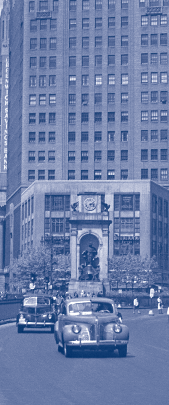 While most of the debate surrounding distance-based user fees has focused primarily on privacy and environment, there are several additional—and in our view more pressing—questions that have received much less attention in public, political, and media debates. Switching to a distance-based user fee system would require a massive investment in new technology, as well as developing new administrative capabilities within government to manage the programs. Are the current political liabilities of the fuel tax really so great as to warrant development of such an enormous new system? Might interest in electronic tolling evaporate with a few substantial hikes in the per-gallon motor-fuel tax?
While most of the debate surrounding distance-based user fees has focused primarily on privacy and environment, there are several additional—and in our view more pressing—questions that have received much less attention in public, political, and media debates. Switching to a distance-based user fee system would require a massive investment in new technology, as well as developing new administrative capabilities within government to manage the programs. Are the current political liabilities of the fuel tax really so great as to warrant development of such an enormous new system? Might interest in electronic tolling evaporate with a few substantial hikes in the per-gallon motor-fuel tax?
Regardless of the new technologies chosen to levy distance-based user fees, a host of policy questions remains. Should the transition to electronic tolling be revenue neutral, or should fees be set to fund the backlog of existing maintenance and construction needs? Should fees vary by vehicle weight and/or emissions class? Should heavy trucks be charged more to travel on secondary roads—where they do the most damage—than on more heavily-engineered highways? Should urban areas be allowed to layer congestion tolls on top of base fees? Which of these ideas is the public prepared to accept? In London and Southern California, less sophisticated congestion pricing programs have successfully increased vehicle flows and reduced delays with little or no public outcry. But whether network-wide schemes would be received as calmly is far from clear.
Finally, depending on how these policy questions are answered, tolls could be structured to increase transportation system efficiency, effectiveness, and equity—or they could be set to disproportionately benefit powerful entrenched interests. Indeed, while some are enamored of the potential to improve efficiency, effectiveness, and equity, others oppose electronic tolling precisely because it opens the door to variable fees that address these issues. Trucking interests, for example, could be expected to push for flat, per-mile tolling to avoid paying higher variable tolls for operating heavier or more- polluting vehicles. At the same time, manufacturers of large sport utility vehicles, already stinging from lagging sales due to recent increases in fuel prices, might be expected to lobby against the inclusion of per-mile emissions or fuel-efficiency fees.
In short, while distance-based pricing offers the potential to price for a variety of externalities, whether or not such strategies would survive the political bargaining process remains very much in doubt. Reopening the long-settled questions of who should pay for roads and how they should pay entails considerable risk and uncertainty for nearly everyone. If raising the motor-fuel and other established transportation taxes had not become so difficult politically, it’s likely that the development of electronic tolling systems would be moving along much more slowly.
What now?
We have painted a conflicted picture. On the one hand, electronic tolling schemes are burgeoning worldwide. On the other, many elected officials, transportation interest groups, and members of the motoring public remain hostile to the idea. And while the fuel tax appears to be running out of gas, two or three substantial increases to the per-gallon levy could fix it, at least for the next several years. So where are we headed? We see three possibilities.
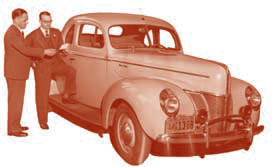 First, we could allow the gasoline tax to whither, while accelerating the trend toward local sales taxes, transportation bond measures, and other ad hoc efforts to cobble together a funding program for transportation. In doing so, transportation finance will become part and parcel of broader political debates over public spending priorities and will be increasingly disconnected from transportation system use.
First, we could allow the gasoline tax to whither, while accelerating the trend toward local sales taxes, transportation bond measures, and other ad hoc efforts to cobble together a funding program for transportation. In doing so, transportation finance will become part and parcel of broader political debates over public spending priorities and will be increasingly disconnected from transportation system use.
Second, we could try to convince elected officials, the media, and voters of the wisdom and simplicity of the nearly century-old system of user-fee finance centered around the motor-fuel tax—at least for the next couple decades. A revived focus on transportation user fees, however, would require that the current trend toward general taxes to finance transportation be reversed.
Or third, we could turn to electronic tolling as the inevitable successor of the motor- fuel tax, sooner rather than later. While the transition costs will be substantial, the continued growth of alternative-fuel vehicles suggests that, for better or worse, the venerable fuels tax will eventually have to be replaced. The opportunity to use such a scheme to price the many external costs of driving is intriguing to many. But critics believe we are more likely to move away from variable pricing and toward a flat-mileage-fee system that would eliminate the fuel efficiency incentive in the current per-gallon gasoline tax.
So who should pay for roads? How should they pay in the years to come? The recent upsurge suggests that electronic tolling of road use may be coming faster than many thought possible. The possibilities are many, the risks substantial, and the future uncertain.
Further Readings
David J. Forkenbrock and Jon G. Kuhl. A New Approach to Assessing Road User Charges (Iowa City: University of Iowa Public Policy Center, 2002).
PSRC. Transportation Pricing Demonstration Project. Issue Paper #4, Puget Sound Regional Council, Seattle, WA. 2002.
Werner Rothengatter. New Developments in the Use of Advanced Technologies to Price the Movement of Goods in Europe. Symposium on Linking Goods Movement to Economic Prosperity and Environmental Quality, UCLA Extension Program, Lake Arrowhead, CA, October 24–26, 2004.
Robert Salladay, “DMV Chief Backs Tax by Mile,” Los Angeles Times, November 16, 2004.

